Plínio, o Novo
Plínio de Arruda Sampaio detona
Dilma .
Plínio ARRUDA rouba a cena e provoca
rivais em debate presidencial
PLINIO VS DILMA - Debate Record
Eleições 2010
Plínio dá aula de política exterior
para Serra
Lembrem-se: O Plínio avisou!
Plínio declara - Dilma é uma farsa
- Debate Gazetta-Estadão 08-09-2010
Considerações finais (5) Debate Globo 30-09-2010
Plínio de Arruda avalia vitória de
Dilma
Plinio comenta vitória de Dilma
Méritos:
falou com antecedência do que viria e não teve vida para tripudiar sobre a
morte política da antagonista.
Lula não vai ao velório de Plínio de Arruda Sampaio: quando a grosseria se encontra com a mesquinhez
Por: Reinaldo Azevedo 09/07/2014
às 20:29
Plínio
de Arruda Sampaio, que morreu nesta terça, aos 83 anos: Lula ficou longe
Eu
não concordava com praticamente nada do que pensava e dizia Plínio de Arruda
Sampaio, que morreu nesta terça de câncer, aos 83 anos, e foi sepultado nesta
quarta. Há coisa de uns três ou quatro anos, tivemos um debate bastante azedo
na Faculdade de Direito da USP. Ele não teve receio nenhum de dizer o que
pensava sobre as minhas opiniões e as minhas escolhas políticas, e eu idem.
Alguns tentaram colar em mim a pecha de agressivo porque eu não teria
respeitado a sua idade — coisa de que ele, obviamente, não reclamou porque,
também para bater, ele não pensava no assunto. Há pouco mais de um ano, ainda
nos encontramos num bate-papo promovido pela revista “Imprensa”, aí numa
conversa cordialíssima. Era um homem inteligente e educado no trato pessoal,
que fez uma trajetória curiosa: o tempo o foi conduzindo cada vez mais para a
esquerda. Como tinha formação intelectual bastante sólida, às vezes eu chegava
a desconfiar de sua adesão a certas ideias. Eu julgava impossível que ele não
soubesse que algumas contrariavam a aritmética. Era, no entanto, um militante
político em sentido, vá lá, clássico (ou ortodoxo): mais valia a coerência
política do que a aritmética.
Não
é verdade que sempre tenha sido um homem de esquerda, como li em muitos
lugares. Era, como ele próprio chegou a admitir mais de uma vez, o que se
chamava um “conservador”, do Partido Democrata Cristão. Foi secretário de
Carvalho Pinto. Nesse grupamento, aí, sim, alinhava-se com algumas teses da ala
progressista da Igreja Católica. E foi caminhando para a esquerda, fundou o PT
e dele se desligou para criar o PSOL. Tinha um pensamento até certo ponto
curioso: digamos que fosse marxista nos meios, mas não na teoria. E se
acrescente — no Brasil, nunca é demais — que jamais pesou qualquer sombra de
dúvida sobre a sua honradez pessoal.
Muito
bem! Políticos das mais diversas correntes compareceram a seu velório: muitos
deles ligados à esquerda e ao PT; outros, a partidos aos quais Plínio se
opunha, como é o caso dos tucanos Geraldo Alckmin, governador de São Paulo, e
de José Serra, ex-governador e ex-prefeito, com quem Plínio chegou a dividir
uma casa nos EUA, no tempo de exílio.
Pois
é… Plínio foi um fiel militante petista — nunca submisso, isso é verdade —
desde a criação do partido até a sua decisão de romper com a legenda para se
filiar ao PSOL. Por mais que eu discordasse também da crítica que ele fazia ao
PT — onde ele via os problemas, eu enxergava algumas poucas virtudes —, sua
crítica sempre foi de natureza política. Jamais enveredou para o terreno do
ataque pessoal. Lula, não obstante, pouco importa o pretexto, não compareceu a
seu velório.
Foi
uma decisão mesquinha. Gostemos ou não disto — eu, deixo claro, não gosto —,
Lula é uma das lideranças mais importantes do país e é certamente uma das
referências da militância alinhada com a esquerda — ainda que seu esquerdismo
tenha um viés muito particular (Plínio também diria isso por motivos distintos
dos meus). Não tem jeito, não! O Babalorixá de Banânia não perdoa ninguém que
desafie a sua liderança, não importa se dentro ou fora do arco de forças da
esquerda.
A
decisão de não comparecer ao velório remete a uma deformação moral de que já
tratei aqui muitas vezes: Lula é capaz de se oferecer para lavar a biografia do
pior sacripanta se este lhe cair aos pés e jurar fidelidade. E não hesita um
minuto para enlamear a reputação de uma pessoa digna se esta resistir a seus
encantos.
Não
comparecer ao velório de Plínio é de uma grosseria política e de uma mesquinhez
inaceitáveis.
Plínio,
o Velho
História
Natural (no original em latim, Historia Naturalis) é uma enciclopédia
escrita por Caio Plínio Segundo (conhecido também como Plínio, o Velho),
filósofo e naturalista que viveu entre 23 d.C. e 79 d.C. e morreu na famosa
erupção do vulcão Vesúvio, responsável pela destruição de Pompeia, Herculano e
outras vilas menores ao redor. Apesar de ter composto vários outros trabalhos
científicos e filosóficos, a História Natural é o único trabalho de Plínio que
chegou até nossos dias, sendo também um dos maiores textos em volume que resta
da época da antiga
Roma,
e ainda por cima, completo.
É
consenso entre os historiadores que a História Natural é o último trabalho de
Plínio, cuja violenta morte o impediu de fazer uma revisão mais criteriosa de
seu texto. Dividida em 37 livros, a obra pretendia cobrir todo o campo de
conhecimento explorado pelo homem da antiguidade clássica, e tomava por base as
fontes mais confiáveis ao alcance do autor.
O
título desta enciclopédia, à primeira vista, pode levar a conclusões
equivocadas, pois ela não é essencialmente um trabalho de história, ou relato
de fatos passados, mas sim um relatório ou pesquisa. Do mesmo modo, o termo
"natural" utilizado no título tinha o sentido, na época de Plínio, de
se referir a toda a cultura conhecida, seja esta construída pela natureza ou
pelo homem. Uma interpretação mais satisfatória do título original em latim,
para o português contemporâneo seria algo como "Pesquisa Cultural".
O
desejo de Plínio com monumental obra, acredita-se que era a de legar uma
contribuição romana ao conhecimento humano, que na sua época permanecia ainda
território dos gregos. O cidadão romano médio costumava receber uma formação
mais prática, voltada para o cotidiano, dentro de um Estado obcecado com as
conquistas territoriais e a riqueza que estas podiam render.
Nesta
enciclopédia, que de acordo com o próprio autor em seu prefácio, seria a
primeira do gênero (afirmação controversa), Plínio oferece todos os tipos de
informação crítica, mencionando fontes, e por vezes relatas curiosidades como a
que está em seu catálogo de pessoas que atingiram uma idade avançada, onde
menciona um homem de Bolonha, que teria morrido com a idade de 150 anos (ao
menos, ele teria sido um contribuinte por 150 anos).
Entre
os volumes não há um critério real de separação das áreas de conhecimento.
Portanto, não se deve estranhar que, no meio do texto sobre horticultura
encontre-se informações sobre navegação (afinal, velas são feitas de linho).
Sua
organização :
Volume
I
- Prefácio, índice e relação das fontes consultadas;
- Prefácio, índice e relação das fontes consultadas;
Volume
II
- Cosmologia, astronomia e meteorologia;
- Cosmologia, astronomia e meteorologia;
Volumes
III a VI
- Geografia;
- Geografia;
Volume
VII
- Antropologia e fisiologia humana;
- Antropologia e fisiologia humana;
Volumes
VIII a XI
- Zoologia;
- Zoologia;
Volumes
XII a XXIX
- Temas relacionados à botânica, agricultura, horticultura e farmacologia;
- Temas relacionados à botânica, agricultura, horticultura e farmacologia;
Volume
XXX
- Magia e Zoroastrismo;
- Magia e Zoroastrismo;
Volumes
XXXI a XXXVII
- Mineralogia
- Mineralogia
Bibliografia:
LENDERING, Jona. Pliny's Natural history (em inglês). Disponível em: <http://www.livius.org/pi-pm/pliny/pliny_e3.html>. Acesso em: 17 jul. 2012.
LENDERING, Jona. Pliny's Natural history (em inglês). Disponível em: <http://www.livius.org/pi-pm/pliny/pliny_e3.html>. Acesso em: 17 jul. 2012.
The Natural History
"There is no book so bad that some good can not
be got out of it," Pliny the Elder used to say, and he read everything that he
could obtain. His nephew Pliny the Younger gives an indication how devoted his uncle was to
reading and studying, which was like working to him.
The only time he took from his work was for his bath,
and by bath I mean his actual immersion, for while he was being rubbed down and
dried he had a book read to him or dictated notes. When traveling he felt free
from other responsibilities to give every minute to work; he kept a secretary
at his side with book and notebook; and in winter saw that his hands were
protected by long sleeves, so that even bitter weather should not rob him of a
working hour. For the same reason, too, he used to be carried about Rome in a
chair. I can remember how he scolded me for walking; according to him I need
not have wasted those hours, for he thought any time wasted which was not
devoted to work. It was this application which enabled him to finish all those
volumes of the Natural History.note
Seeing the elder Pliny's maniacal working habits, one
starts to understand why he remained unmarried.
The Natural History, which was dedicated to Titus in 77, was, according to the author's nephew,
"a learned and comprehensive work as full of variety as nature
itself". The same sentiment is expressed in the last line of the
encyclopedia:
Greetings, Nature, mother of all creation, show me
your favor in that I alone of Rome's citizens have praised you in all your
aspects.note
This line is crucial to understanding the text, which
is above all aRoman text. In fact, Pliny is romanizing science, which had
until then been a Greek territory. Pliny's sometimes irritating polemics
against Greek silliness are part and parcel of his project. At the same time,
he really tries to offer descriptions of every aspect of the world. And it must
be said: Pliny lives up to the expectations. In thirty-seven volumes, he does
describe the full complexity of nature. And more than that, because in Pliny's
view, which was common in Antiquity, "nature" includes things that we
would call "culture".
He deals with the entire creation, which is, in the
author's stoic view fundamentally good because it is made by God. Another
aspect of this encyclopedia that may cause some surprise to the modern reader,
is the use of the word "history", which does not mean that Pliny is
interested in the past (although he is), but means "research". The
Latin title Historia naturalis could best be translated as
"Research of the creation".
The encyclopedia is a marvelous text. Pliny offers all
kinds of information critically, mentions his sources, and often sees the fun
of certain things. For example, in his catalogue of people who have reached a
venerable old age, he mentions one man from Bologna who died when he was 150
years old - at least, he had been a tax payer for 150 years.
The text has some structure. The first book is a
catalogue of sources, which is followed by two groups of eighteen books. The
first set is a description of nature, the second set describes nature in its
relation to mankind. Within the books, there is no real recognizable system,
and one must not be surprised to find a description of navigation in the book
on horticulture. (After all, sails are made of linen.)
Contents of the Natural History
Book 1: Table of contents and bibliography
Book 2: Cosmology, astronomy and meteorology
A.o. the sky, signs of the zodiac, the four elements, sun, the search for god, fortune, the power of the gods, the planets, eclipses of moon and sun, an eulogy of the first scientists, estimates of the distances between planets, comets, comets as portents, the astronomerHipparchus of Nicaea, meteors, St Elmo's fire, the weather, the eight main winds, whirlwinds, thunder, lightning and its effects, miraculous celestial happenings, rainbows, mother earth, the spherical shape of the earth, oceans, the circumnavigation of the world, sunrise and sunset, the sun's altitude, the hours of daylight, sundials, climate and race, earthquakes, historical earthquakes, fire, petroleum, naphtha, volcanoes, the circumference of the earth.
Book 3: Geography of western and southern Europe
A.o. the pillars of Hercules, Hispania, the measurement of distances, Italy, the Tiber, Campania and the bay of Naples, Rome, Sicily.
A.o. the pillars of Hercules, Hispania, the measurement of distances, Italy, the Tiber, Campania and the bay of Naples, Rome, Sicily.
Book 4: Geography of eastern and northern Europe
Book 5: Geography of northern Africa and western Asia
A.o., Africa, the Atlas, the exploration of Africa (including Hanno),Cyrenaica, the interior of Africa, Egypt, the Nile, Syria, Judaea, the Dead Sea, the Essenes, Palmyra, Asia Minor, Cyprus.
A.o., Africa, the Atlas, the exploration of Africa (including Hanno),Cyrenaica, the interior of Africa, Egypt, the Nile, Syria, Judaea, the Dead Sea, the Essenes, Palmyra, Asia Minor, Cyprus.
Book 6: Geography of the far south and the far east
A.o., the Black Sea, Ecbatana, the Caspian Sea, Scythia and China, size of India, rivers of India, theIndus, Sri Lanka, way of life on Sri Lanka, Babylonia, Arabia, the canal between the Nile and the Red Sea, Ethiopia.
A.o., the Black Sea, Ecbatana, the Caspian Sea, Scythia and China, size of India, rivers of India, theIndus, Sri Lanka, way of life on Sri Lanka, Babylonia, Arabia, the canal between the Nile and the Red Sea, Ethiopia.
Book 7: Anthropology and human physiology
A.o., man as the highest species in the order of creation, racial and
individual characteristics, the evil eye, fire-walking, the marvels of India
and Ethiopia, Pygmies, longevity among the Indians, changes of sex, pregnancy
and birth, characteristics that can be transmitted, children, unusual
attributes, examples of strength, sight, voice and memory, Julius Caesar, Pompey the Great, outstanding achievements,
exceptional intelligent Romans, outstanding scientists and artists,
happiness, Augustus, the shortness of life, signs of impending death, the
soul, revival of people pronounced dead, sudden death, cremation, belief in an
after-life, the discovery of arts and science, technological progress,
sundials, clepsydrae.
Book 8: Land animals
A.o., elephants, the games of Pompey, snakes, Aristotle as a zoologist, lions, dromedaries and camels, giraffes, the legendary manticore, basilisk, werewolf, crocodiles, hippopotamus, hedgehogs, dogs, the dog and horse of Alexander the Great, horses, bullfights, holy cows, sheep, wool, embroidery and dyeing woolen cloth, apes.
A.o., elephants, the games of Pompey, snakes, Aristotle as a zoologist, lions, dromedaries and camels, giraffes, the legendary manticore, basilisk, werewolf, crocodiles, hippopotamus, hedgehogs, dogs, the dog and horse of Alexander the Great, horses, bullfights, holy cows, sheep, wool, embroidery and dyeing woolen cloth, apes.
Book 9: Marine animals
A.o., tritons, dolphins, tunny fish, lampreys, cuttlefish, squid, octopuses,
crabs, the decay of morality is caused by the produce of the sea, pearls, the
pearls of Cleopatra, purple fish, murex, the use of purple robes, the
manufacture of purple dye, sponges, sponge diving, oysters.
Book 10: Birds
A.o., the ostrich, eagle, the eagle as standard of the legion, cocks, geese, swallows, nightingales, talking birds, carrier pigeons, parrots, parakeets, magpies, ravens, aviaries, animal reproduction, the five senses.
A.o., the ostrich, eagle, the eagle as standard of the legion, cocks, geese, swallows, nightingales, talking birds, carrier pigeons, parrots, parakeets, magpies, ravens, aviaries, animal reproduction, the five senses.
Book 11: Insects
A.o., bees, hives, the sources of honey, the organization of bees, honeycombs, drones, queen bees, portents provided by bees, bee-stings, the silk-moth, silk production, comparative zoology, and taxonomy: eyes, heart, anthropoid apes, bad breath of animals.
A.o., bees, hives, the sources of honey, the organization of bees, honeycombs, drones, queen bees, portents provided by bees, bee-stings, the silk-moth, silk production, comparative zoology, and taxonomy: eyes, heart, anthropoid apes, bad breath of animals.
Book 12 and 13: Exotic trees
A.o., trees and their products, banyan, pepper, ginger-trees, cane-sugar,
cotton-tree, resins, frankincense, myrrh, cinnamon, cassia, balsam, perfumes,
palm-trees, figs, papyrus, paper, varieties of paper, history of paper,
citrus-wood, aquatic trees.
Book 14: The vine
A.o., Italian trees, the decay of science and the spread of avarice, the vine, viticulture, varieties of vines and wines, Cato in viticulture, successful vineyards, famous wines, physiological effects of wine, Italian wines, foreign wines, regulations relating to wine, retsina, storage of wine, over-indulgence, famous drinkers, beer.
A.o., Italian trees, the decay of science and the spread of avarice, the vine, viticulture, varieties of vines and wines, Cato in viticulture, successful vineyards, famous wines, physiological effects of wine, Italian wines, foreign wines, regulations relating to wine, retsina, storage of wine, over-indulgence, famous drinkers, beer.
Book 15: Olive and other fruit trees
A.o., history of the olive-tree and the production of oil, mistaken ideas about the olive tree, uses of oil, Cato's instructions for olive growing, artificial oil, apples, pears, grafts, storage of fruit, figs, stories about figs, cherry-trees, myrtle.
A.o., history of the olive-tree and the production of oil, mistaken ideas about the olive tree, uses of oil, Cato's instructions for olive growing, artificial oil, apples, pears, grafts, storage of fruit, figs, stories about figs, cherry-trees, myrtle.
Book 16: Forest trees and botany
A.o., the Chauci, military decorations, the Rostra, the award of wreaths, acorns, cork-tree, pitch-pine, ivy, aquatic shrubs and reeds, bamboo, rushes, structure of trees, large trees, wood-borers, veneers, mistletoe.
A.o., the Chauci, military decorations, the Rostra, the award of wreaths, acorns, cork-tree, pitch-pine, ivy, aquatic shrubs and reeds, bamboo, rushes, structure of trees, large trees, wood-borers, veneers, mistletoe.
Book 17: Other useful plants
A.o., early farming, treatises on agriculture, Cato on buying a farm, farmhouses, choosing a manager, secrets of good farming, grain, pulses, wheat, barley, porridge, milling, bread, bakers at Rome, harvesting corn, the storage of grain.
Book 18: How to run a farm
Book 19: Horticulture
A.o., sailing, including a section on flax.
Book 20: Drugs obtained from garden plants
A.o., man's food and plants, cucumbers, onions, garlic, lettuce, cabbage, pennyroyal, poppies, opium.
Book 21 and 22: Drugs obtained from flowers and herbs
A.o., thyme, bees and honey, helenium, Greek weights and measures.
Book 23: Drugs obtained from the vine and the walnut
A.o., power of vinegar, walnuts.
Book 24: Drugs obtained from forest trees
A.o., trees and remedies obtained from them, medicine, remedies from trees and plants, cork-trees, juniper-trees, tree-moss, resin, ivy, holly and brambles, magical plants.
A.o., sailing, including a section on flax.
Book 20: Drugs obtained from garden plants
A.o., man's food and plants, cucumbers, onions, garlic, lettuce, cabbage, pennyroyal, poppies, opium.
Book 21 and 22: Drugs obtained from flowers and herbs
A.o., thyme, bees and honey, helenium, Greek weights and measures.
Book 23: Drugs obtained from the vine and the walnut
A.o., power of vinegar, walnuts.
Book 24: Drugs obtained from forest trees
A.o., trees and remedies obtained from them, medicine, remedies from trees and plants, cork-trees, juniper-trees, tree-moss, resin, ivy, holly and brambles, magical plants.
Book 25: Drugs obtained from herbs
A.o., plants used in medicine, Mithridates's interest in medicine, Greek writers in herbal medicine, moly, mandrake, hemlock, erigeron and toothache.
A.o., plants used in medicine, Mithridates's interest in medicine, Greek writers in herbal medicine, moly, mandrake, hemlock, erigeron and toothache.
Book 26: Diseases and remedies
A.o., new skin diseases, leprosy, ancient medicine, Asclepiades.
A.o., new skin diseases, leprosy, ancient medicine, Asclepiades.
Book 27: Drugs obtained from wild plants
In a more or less alphabetic order: a.o., aconite, wormwood, and the potency of drugs.
Book 28: Medicines obtained from man
A.o., remedies obtained from man himself, discussion of language, the power of charms, incantations, superstitions, human saliva, will-power, sexual intercourse, remedies from elephants and lions, milk and butter, fat, suet, marrow, gall, blood, poisons, dandruff, baldness, beauty treatment, soporifics, aphrodisiacs.
A.o., remedies obtained from man himself, discussion of language, the power of charms, incantations, superstitions, human saliva, will-power, sexual intercourse, remedies from elephants and lions, milk and butter, fat, suet, marrow, gall, blood, poisons, dandruff, baldness, beauty treatment, soporifics, aphrodisiacs.
Book 29: Medicines obtained from land animals
A.o., history of the medical profession (a.k.a. as "a long stiff diatribe against doctors"), Hippocrates of Cos, famous doctors, Cato on doctors, bizarre remedies.
A.o., history of the medical profession (a.k.a. as "a long stiff diatribe against doctors"), Hippocrates of Cos, famous doctors, Cato on doctors, bizarre remedies.
Book 30: Magic
Book 31: Water
A.o., water, sea, water creatures, different kinds of water, poisonous waters, waters with petrifying properties, waters with beneficial properties, prospecting for water, wells, pipes, methods of carrying water, hot springs, desalination, salt, soda, sponges.
A.o., water, sea, water creatures, different kinds of water, poisonous waters, waters with petrifying properties, waters with beneficial properties, prospecting for water, wells, pipes, methods of carrying water, hot springs, desalination, salt, soda, sponges.
Book 32: Sea animals
A.o., forces of nature, goby, sting-ray, Ovid on fishing, coral, tortoise, oysters, medical uses of oysters, leeches.
A.o., forces of nature, goby, sting-ray, Ovid on fishing, coral, tortoise, oysters, medical uses of oysters, leeches.
Book 33: Gold, silver and mercury
A.o., man's greed and exploitation of the earth's resources, gold at Rome, weapons, history of theequestrian order, history of coinage, greed and its effect on Roman character, physical properties of gold, its popularity, sources of gold, mining techniques, gold produced from orpiment, gold statues, refining, silver, mercury, medical use of metals, cinnabar, touchstone, mirrors, digression on wealth, changing prices.
A.o., man's greed and exploitation of the earth's resources, gold at Rome, weapons, history of theequestrian order, history of coinage, greed and its effect on Roman character, physical properties of gold, its popularity, sources of gold, mining techniques, gold produced from orpiment, gold statues, refining, silver, mercury, medical use of metals, cinnabar, touchstone, mirrors, digression on wealth, changing prices.
Book 34: Metal
A.o., history of bronze working, bronze statues, Greek and Roman styles of sculpture, famous statues, colossi, the Colossus of Rhodes, famous Greek sculptors, copper, copper slag and copper compounds used in medicine, iron-ores and smelting, lode-stone, lead, tin, medical use of lead.
A.o., history of bronze working, bronze statues, Greek and Roman styles of sculpture, famous statues, colossi, the Colossus of Rhodes, famous Greek sculptors, copper, copper slag and copper compounds used in medicine, iron-ores and smelting, lode-stone, lead, tin, medical use of lead.
Book 35: Earth
A.o., portraiture, paint and a history of painting, the painter's palette, white pigments, black pigments, eminent artists, Apollodorus, Zeuxis, Parrhasius, Apelles, Aristides, Protogenes, Italian painters, women painters, modeling, use of clay, brick-making, sulphur, bitumen, alum, kaolin and chalk.
A.o., portraiture, paint and a history of painting, the painter's palette, white pigments, black pigments, eminent artists, Apollodorus, Zeuxis, Parrhasius, Apelles, Aristides, Protogenes, Italian painters, women painters, modeling, use of clay, brick-making, sulphur, bitumen, alum, kaolin and chalk.
Book 36: Stone
A.o., marble, marble statues, sculptors, Phidias, Praxiteles, Scopas, the Mausoleum at Halicarnassus, the Laocoon group, veined marbles, marble veneers, marble dressing, granite, obelisks, obelisks at Rome,an obelisk used as gnomon, the pyramids, the sphinx, the tower at Pharos, labyrinths, the temple of Artemis at Ephesus, the buildings of Rome, sewers, houses, Nero's Golden House, Scaurus' theater, aqueducts, water supply, magnetite, asbestos, haematite, selenite, onyx, mosaics, glass. A paean to fire and an utterly peculiar story in the very last paragraph.
Book 37: Precious stones
A.o., pearls, myrrhine ware, fluorspar, rock-crystal, Greek accounts of the origin of amber, the truth about amber, gemstones, diamonds, emeralds, beryls, tourmaline, amethysts, sapphires, topaz, rainbow stone, and finally a list of "best ofs", including a praise of Italy and a survey of the world's most expensive products.
A.o., pearls, myrrhine ware, fluorspar, rock-crystal, Greek accounts of the origin of amber, the truth about amber, gemstones, diamonds, emeralds, beryls, tourmaline, amethysts, sapphires, topaz, rainbow stone, and finally a list of "best ofs", including a praise of Italy and a survey of the world's most expensive products.
Literature
An accessible edition of the Natural
History can be found in the Penguin series. The Latin text can be
found here.
This page was created in 2000; last modified on 22
February 2015.
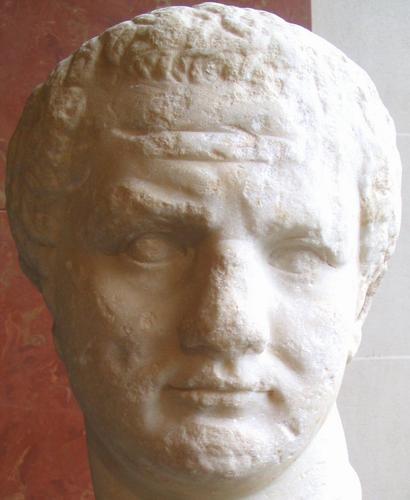
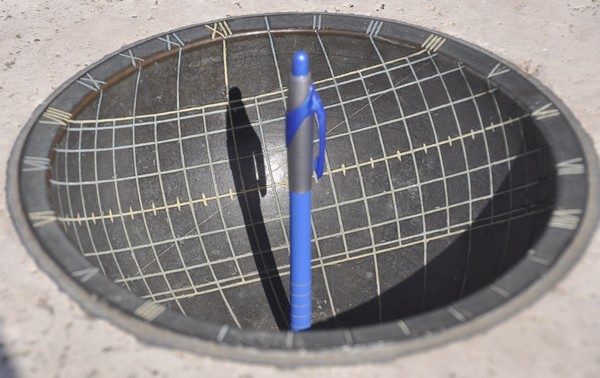
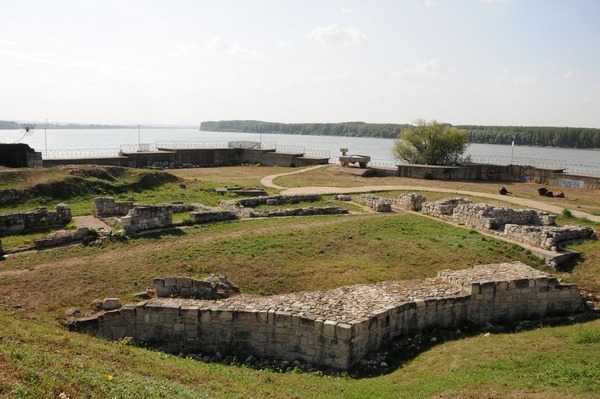
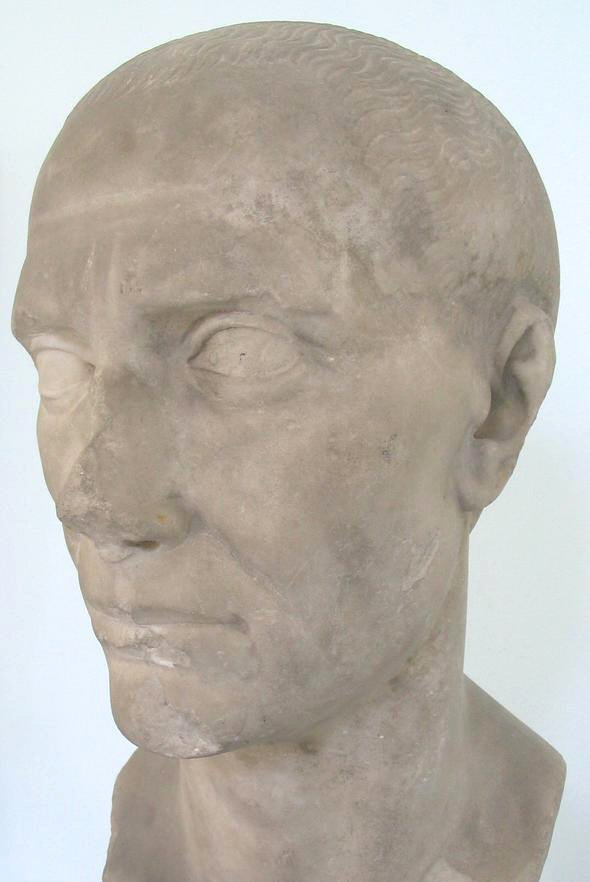
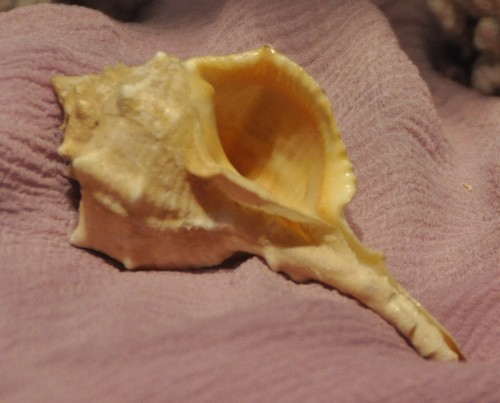
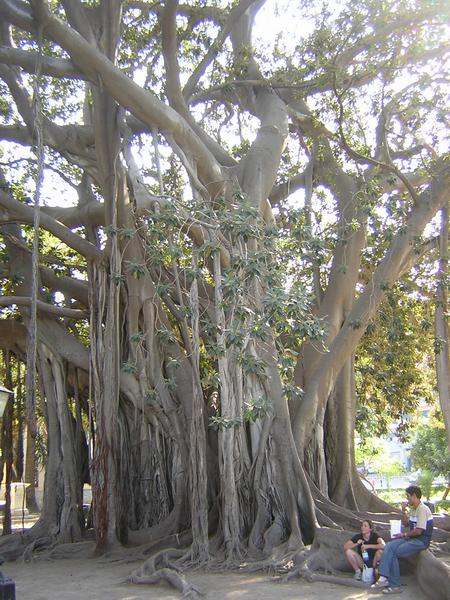
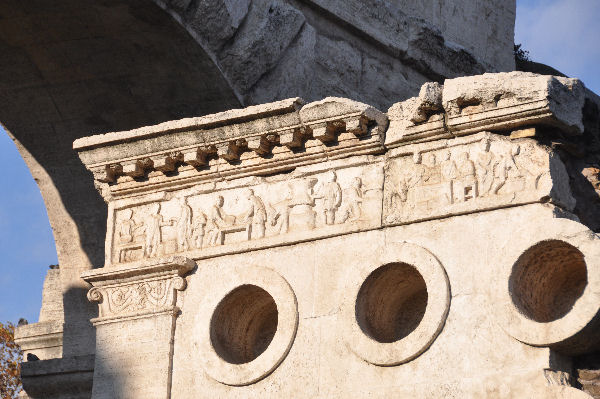
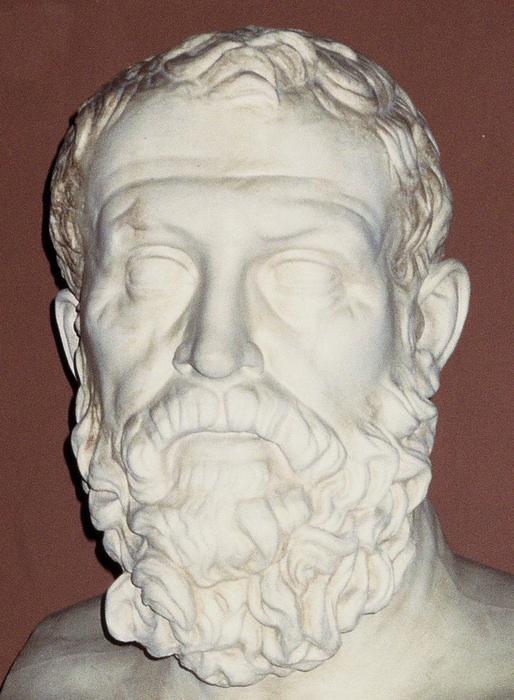
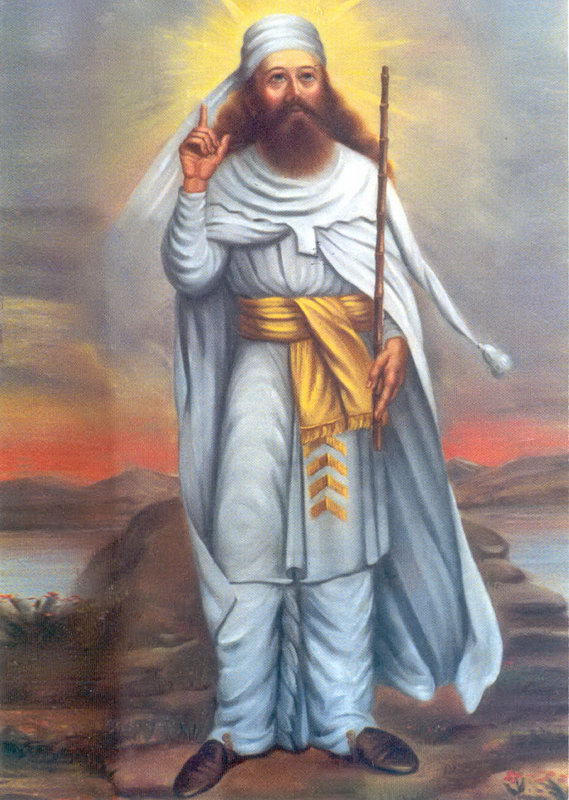

Nenhum comentário:
Postar um comentário